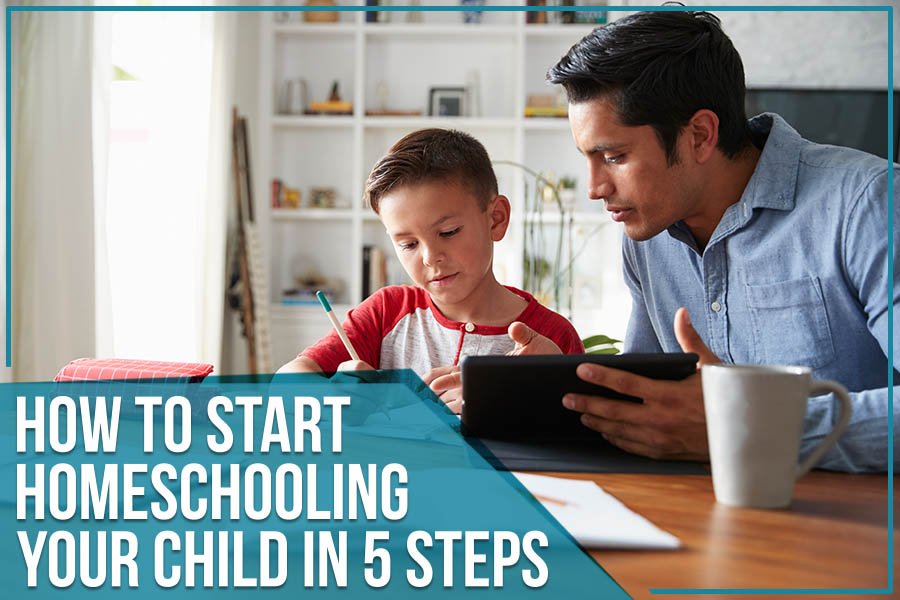
How To Start Homeschooling Your Child In 5 Steps
This past year and a half has been a historic time to say the least. The pandemic’s impact has extended far beyond the hospitals and into the walls of our very homes and schools. Many parents have been left confused and scrambling as they watched their children fall through the cracks and miss important academic benchmarks.
As the Delta strain continues to threaten communities, homeschooling and online education have become attractive options for many parents. The benefits of one-on-one schooling are numerous. You’ve done your research, and you’ve decided to take the leap — but where and how do you start?
We’ve got your back! In this blog post, we’ll guide you through the process step-by-step, so you and your child transition smoothly to homeschooling and get the most out of this exciting and rewarding experience.
Step 1: Start with the Legal Stuff
The very first step is to familiarize yourself with your state’s homeschool requirement.
You can transition to homeschooling at any time during the school year in all 50 states. However, the requirements and process vary from state to state.
For example, if you live in California, parents have four homeschooling options:
- homeschooling as a home-based private school,
- homeschooling via a satellite program,
- independent study,
- or homeschooling with a tutor.
Depending on which option you choose, California residents may need to fill out a Private School Affidavit (PSA) prior to the upcoming school year.
You can visit the Coalition of Responsible Home Education to read up on the specific regulations of your state to ensure a smooth transition and that your family remains in full compliance.
Step 2. Consider the Time and Cost Involved
Although homeschooling requires your patience and the dedication of your child, it is definitely worth every minute and effort.
No two families homeschool in the same way. While some parents set up an actual classroom in the house, other homeschooled children work at the kitchen table or on the couch. Arrange whatever works best for your child and is conducive to healthy academic and personal growth. And remember: there’s lots of freedom for you and your family to learn and grow!
You will need to spend money on homeschool supplies, but it doesn’t have to be expensive. You will have to purchase basic supplies and materials for everyday lessons, such as pencils and paper or a dry erase board and possibly arts and crafts. You’ll also want to set aside money for field trips and extracurricular activities.
Step 2: Don’t Do it Alone
Transitioning your child to homeschooling is a big step that can feel intimidating!
Speaking with experienced homeschooling parents can answer your burning questions and help you get a feel for the commitment of this education alternative. Building a network of support will prove invaluable to you and your family. So, seek out friends and acquaintances, social media groups, and homeschooling forums to start building your connections and network.
Step 3: Know Your Child’s Learning Style
When it comes to your child’s education, there is no one-size-fits-all approach. One of the great things about homeschooling is the ability to customize the program to fit your child’s individual needs. Understanding your child’s specific modality, or learning style, will help them learn and retain information more effectively.
It also makes the learning experience more enjoyable and engaging!
Every child has a different learning style:
- Visual Learner – sensitive and insightful
- Auditory Learner – expressive and communicative
- Kinesthetic Learner – uses hand and body movement
Take our free learning style assessment so you can help your child study smarter – not harder. By understanding your child’s strengths and weaknesses, you can choose and design a program to ensure his academic and personal development is on track.
Step 4: Choose the Curriculum
Take the time to research available home-based curriculum and decide which program best suits your child’s needs and goals. Different programs concentrate on different subjects. Additionally, you want to keep electives and foreign languages in mind for college-bound kids.
Curriculum can be expensive, but there are lots of high-quality free materials online! Do a little digging to discover what fits your budget and child’s needs best.
Step 5: Set a Schedule and Structure
A key benefit of homeschooling is the flexibility it offers families. We recommend that you structure a school schedule that complements your child’s needs as well as your own.
Often when parents imagine homeschooling, they picture themselves sitting at a desk with their child all day. You certainly can do this if you’d like — but this is by no means a requirement for a high-quality private education. Certain programs require only your supervision, while others call for a more hands-on approach.
Only you know your child best and what will be the right fit.
Another hallmark of homeschooling is that you get to experience the best parts of your child as they grow and learn. The best way to homeschool depends on your style, circumstances, and the age and ability of your children.
However, you may find it beneficial to:
- organize and structure specific times for schoolwork, playdates, and extracurricular activities,
- set aside each day to review lesson plans or prepare ready-made lesson plans from curricula and websites,
- establish measurable goals and benchmarks to track your child’s academic progress, and review these on a regular basis,
- find creative ways to get out of the house and educate your child in the real world (i.e., museum or library trips).
You Can Do This!
Homeschooling should be an exciting and rewarding experience for both you and your child. Many families grow closer and children thrive under the personalization of private schooling.
If you’re still feeling overwhelmed, partnering with a trusted homeschool program like Groza will take out the guesswork and get your child on track to being his very best. Alternatively, one-on-one or group tutoring is an excellent way to supplement their learning and ensure a qualified educator oversees your child’s academic progression.
Call our team today at (310) 454-3731 or click here to schedule a free consultation.
